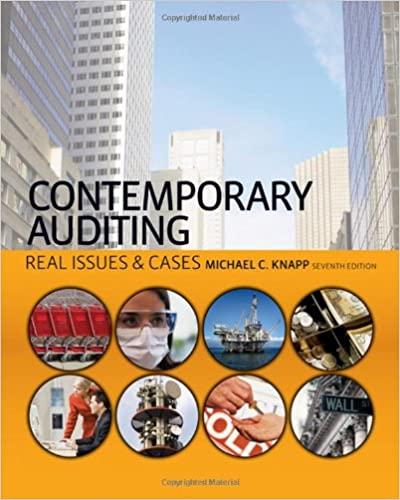Please comment what other information is needed. This is the entire question from CONNECT.







Problem 3-17 Cost Flows; T-Accounts; Income Statement (LO3-2, LO3-3, LO3-4) Supreme Videos, Inc., produces short musical videos for sale to retail outlets. The company's balance sheet accounts as of January 1, are given below. $ 63.000 102,000 Supreme Videos, Inc. Balance Sheet January Assets current assets: Cash Accounts receivable Inventories: Raw materials (film, costumes) $ 30,000 videos in process 45,000 Finished videos awaiting sale 81,000 Prepaid insurance Total current assets Studio and equipment 730,000 Less accumulated depreciation 210,000 Total assets Liabilities and Stockholders' Equity Accounts payable Capital stock $420,000 Retained earnings 270,000 Total liabilities and stockholders' equity 156,000 9,000 330,000 520,000 $850,000 $160,000 690,000 $850.000 Because the videos differ in length and in complexity of production, the company uses a job-order costing system to determine the cost of each video produced. Studio (manufacturing) overhead is charged to videos on the basis of camera-hours of activity. The company's predetermined overhead rate for the year is based on a cost formula that estimated $280,000 in manufacturing overhead for an estimated allocation base of 7,000 camera-hours. The following transactions occurred during the year: a. Film, costumes, and similar raw materials purchased on account, $185,000. b. Film, costumes, and other raw materials used in production, $200,000 (85% of this material was considered direct to the videos in production, and the other 15% was considered indirect). c. Utility costs incurred on account in the production studio, $72,000. d. Depreciation recorded on the studio, cameras, and other equipment, $84,000. Three-fourths of this depreciation related to production of the videos, and the remainder related to equipment used in marketing and administration. e. Advertising expense incurred on account, $130,000. f. Costs for salaries and wages were incurred on account as follows: $ 82,000 Direct labor (actors and directors) Indirect labor (carpenters to build sets, costume designers, and so forth) Administrative salaries $ 110,000 $ 95.000 g. Prepaid insurance expired during the year, $7,000 (80% related to production of videos, and 20% related to marketing and administrative activities). h. Miscellaneous marketing and administrative expenses incurred on account, $8,600. I. Studio (manufacturing) overhead was applied to videos in production. The company used 7,250 camera-hours during the year. j. Videos that cost $550,000 to produce according to their job cost sheets were transferred to the finished videos warehouse to await sale and shipment. k. Sales for the year totaled $925,000 and were all on account. The total cost to produce these videos according to their job cost sheets was $600,000. 1. Collections from customers during the year totaled $850,000. m. Payments to suppliers on account during the year, $500,000; payments to employees for salaries and wages, $285,000. Required: 1. Prepare a T-account for each account on the company's balance sheet and enter the beginning balances. 2. Record the transactions directly into the T-accounts. 3. Is the Studio ( manufacturing) Overhead account underapplied or overapplied for the year? By how much? 4. Prepare a schedule of cost of goods manufactured. If done correctly, the cost of goods manufactured from your schedule should agree with which of the above transactions? 5. Prepare a schedule of cost of goods sold. If done correctly, the unadjusted cost of goods sold from your schedule should agree with which of the above transactions? 6. Prepare an income statement for the year. Cash Accounts Receivable Beg. Bal. Bea. Bal. End. Bal. End. Bal. Raw Materials Prepaid Insurance Beg. Bal. Beg. Bal. End. Bal. End. Bal. Videos in Process Finished Goods Beg. Bal. Beg. Bal. End. Bal. End. Bal. Studio and Equipment Accumulated Depreciation Beg. Bal. Beg. Bal. End, Bal. End. Bal. Studio Overhead Depreciation Expense Beg. Bal. Bea. Bal. End. Bal. End. Bal. Insurance Expense Advertising Expense Beg. Bal. Beg. Bal. Miscellaneous Expense Administrative Salaries Expense Beg. Bal. Beg. Bal. End. Bal. Cost of Goods Sold Sales Beg. Bal. Beg. Bal. End. Bal. End. Bal. Salaries & Wages Payable Accounts Payable Beg. Bal. Beg. Bal. End. Bal. End. Ba Retained Earnings Capital Stock Beg. Bal. Beg. Bal. End. Bal. End, Bal. Supreme Videos, Inc. Schedule of Cost of Goods Manufactured Direct materials: Total raw materials available Raw materials used in production Total manufacturing costs Cost of goods manufactured Supreme Videos, Inc. Schedule of Cost of Goods Sold Prepare an income statement for the year. S 925,000 590,600 334,400 Supreme Videos, Inc. Income Statement For the Year Ended December 31 Sales Cost of goods sold Gross margin Selling and administrative expenses: Administrative salaries $ 95,000 Advertising expense 130,000 Depreciation expense 21,000 Miscellaneous expense 8,600 Insurance expense 254,600 79,800 Net operating income













